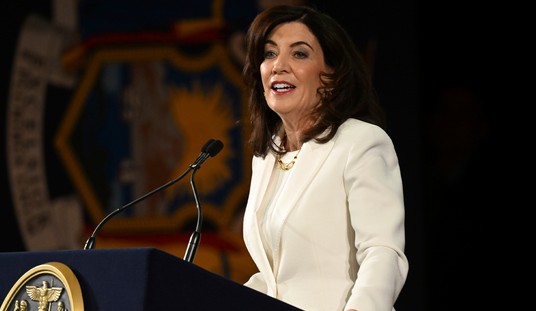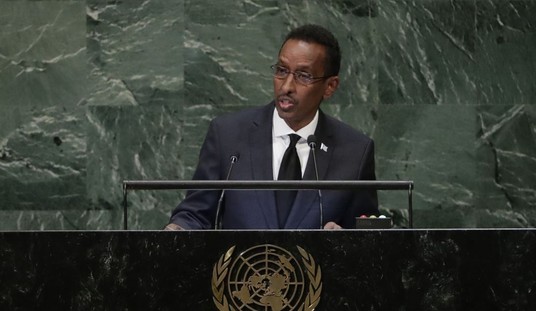“We can deploy a half a billion more solar panels. We can have enough clean energy to power every home. We can build a new modern electric grid. That's a lot of jobs; that's a lot of new economic activity.” So intoned Hillary Clinton, during the first presidential debate at Hofstra University, New York, on September 26.
Where have we heard this before? Like Clinton, President Obama hasn’t a clue how a viable market is created and sustained. Solyndra, if you recall, was awarded $527 million from taxpayers. Each of the temporary, unsustainable jobs created by Solyndra and touted by Obama cost $479,000. Obama thought this was sufficient to secure a profitable market for the product.
Clinton is every bit the cretin when it comes to the market economy.
Donald Trump, however, is good at this; business is his bailiwick. He has spoken so well in interviews about the unviable nature of the green energy industry (unless, of course, it’s privately funded and the risk is neither subsidized nor socialized). Trump can’t allow the arrogant certitude begun with Obama and Solyndra to continue with Clinton.
For Trump understands how demand is generated and sustained. How many
times has he recounted on TV, for example, that so expensive are solar panels, that by the time these panels have paid for themselves—also known as “a return on investment”—it’s time to replace them? In a May appearance in Bismarck, North Dakota, on the occasion of his reaching and surpassing the magic delegate threshold (chronicled in “The Trump Revolution: The Donald’s Creative Destruction Deconstructed”), Trump spoke eloquently about deregulating energy.
Clean coal can be restored, he remarked, if regulations are reduced. The money quote Trump should repeat, from that appearance: “Free-up coal and let the market work. Market forces are a beautiful thing.” Indeed they are.
Recommended
Back to the larger principle:
When Clinton dares to mention the environment and how much money she’ll steal from you and me to enrich and entrench global bureaucracies who’ll adjudicate environmental affairs—Trump must bring it back to America First. And to immigration.
NumbersUSA has studied and documented in detail the impact of an annual influx of 2-3 million people (counting the illegal intake), on our American ecosystems.
According to "Roy Beck's celebrated demonstration of the population consequences of current US immigration policies," the devil is in the unsustainable numerical details. In the four decades prior to 1965—which is when the Act that heralded the age of legal mass immigration was undemocratically enacted—America welcomed an average of 178,000 immigrants each year. Beck calls these years the Golden Era of immigration, characterized as they were by tight labor markets, which encouraged capital investment, and increased productivity and hence wages. America was solidly middle-class. Like others in prosperous developed countries, Americans had "chosen family sizes that allowed for a stabilized U.S. population."
Formulated by federal fiat in 1965, the new immigration policy saw an exponential increase in the number of legal immigrants admitted annually into the US. Throughout the 1990s immigration averaged 1 million legal immigrants a year. Combined with the number of illegal arrivals, the annual intake exceeded 3 million. As a result of this increase, "every aspect of American society has changed," attests Beck.
As on most matters of national identity—language and faith, for example—elite and public attitudes diverge on immigration. "In nineteen polls from 1945 to 2002," writes Samuel P. Huntington, "the proportion of the public favoring increased immigration never rose above 14 percent." Between 70 and 80 percent of Americans want immigration cut—not because they are "deplorable," to go by Mrs. Clinton’s libel—but because they experience mass immigration first-hand.
Indeed, government immigration policy reflects America's "denationalized elites," who are committed to transnational and sub-national identities. From their vantage point, cultivated usually from the serenity of their stately homes, these open-border libertarians and utilitarians will often tout the advantages of high-population density.
Apparently, Cairo and Calcutta are models for the specialization that comes with an increased division of labor. However, if American history (circa 1894) is anything to go by, the scarcity and high cost of labor helped propel this country into its position as the world's leading industrial power. These factors, observed historian Paul Johnson, "[G]ave the strongest possible motive not only to invent but to buy and install labor-saving machinery, the essence of high productivity, and so mass production."
History notwithstanding, Clinton’s open-ended immigration policy amounts to a philosophy of act globally, trash locally. Thus when Clinton so much as mentions the environment, Trump ought to bring it back to America’s natural resources; remind her that non-traditional rates of immigration have required doubling the expenditure on infrastructure—building twice as many schools, sewage treatment plants, roads and streets. "The majority of all new additional infrastructure needs over the past quarter century are the result of Washington's immigration policies," notes the aforementioned Mr. Beck.
In California, a school will have to be built every day in perpetuity to keep up with the unremitting influx. Urban sprawl, traffic congestion, overcrowding, pollution, and rural land loss—there isn't a community in the US that'll escape the social and environmental degradation witnessed in California and Florida.
Look, the destruction of this country's social fabric has never bothered leftists or environmentalists. But what of its natural treasures? They claim to care about those. At the current rate of immigration, 40 percent of America's lakes and streams are no longer fishable or swimmable. What will be their fate in the middle of the century?
If Trump had advisers who coached him in argument, debate would proceed as follows: No sooner would the woman, The Hildebeest, begin to prattle about working with “our global partners” to save the planet—than Trump would pounce.
He’d ask her to tell the American people what she imagines is the impact on the environment of the millions rushing the southern border, and then defecating and despoiling their way to their destinations in the US. This vivid description is not mine, but courtesy of a Time magazine cover, in which the reporters bewailed “a land on the southern border turned into a vast latrine, revolting mounds of personal refuse everywhere and enough discarded plastic bags to stock a Wal-Mart."
Clinton and her gangreens are cosmopolitans, citizens of the world. Population explosion they consider a global—not a local—problem. They'll gladly trash Americans for their lavish lifestyles, but about the imperiled quality-of-life across American communities they couldn't give a tinker’s toss.
Yes, ecosystems are intertwined, but talk Trump must, and passionately so, about the natural environment around us and what Hillary Clinton’s annual deluge of immigrants and refugees is doing to our country's ecosystems and their critters.

























Join the conversation as a VIP Member